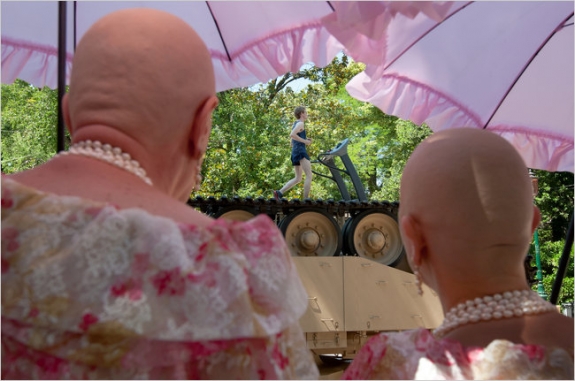When it comes to dense, out-of-control concentrations of contemporary art, there is nothing like the Venice Biennale. With its big central exhibition, its ever-rising number of national pavilions and the scores of collateral shows organized in museums, galleries and palazzos all over the city, the Biennale never stops. It is a cornucopia of recent artistic endeavor, endlessly amplified by Venice itself, which remains one of the most culturally layered, artful and art-filled places on earth.
The multiheaded beast of the Biennale reflects the hopes, dreams and decisions of thousands of individuals and organizations: artists, curators, museum directors and trustees, art dealers, corporate sponsors and a United Nations’ worth of governmental bodies and functionaries, not to mention well-heeled collectors from around the globe determined to raise their profiles with lavish parties, displays of their art holdings or both.
The rest of us just live in their world, trying to make sense of the spectacle of art, money and ambition they generate, taking pleasure and insight where we find it, which is as often in the city itself as in the array of artworks dished up for our momentary delectation.
And the 54th Biennale — which began on Saturday and will run through Nov. 27 — certainly dishes up: starting with “Illuminations,” the event’s rewarding if relatively sedate central survey, and a cluster of pumped-up shows in the national pavilions arrayed across the lush Venetian park known as the Giardini.
Keeping It Real
Those pavilions give us a Biennale on steroids. With some notable exceptions, what might be called late-stage festivalism dominates, in the form of large-scale, labor-intensive installations and environments. Discrete artworks are rare, never mind paintings; Jasper Johns’s famous admonition to “take an object, do something to it,” seems to have been upgraded to the more aggressively territorial “take a space, fill it with something.”
The main topic of conversation among the Giardini pavilions is the role of reality in art. We are treated to large, overwhelming chunks of the real — found, made or remade — and heavy doses of life and, in some cases, death.
In the British Pavilion, Mike Nelson has created a warren of small dim rooms that take the visitor down a rabbit hole to old Istanbul, a mind-boggling feat of trompe l’oeil that proceeds through abandoned workshops and grubby dwellings and includes a dusty courtyard open to the sky, with only two red-tinged dark rooms strung with photographs of Istanbul cracking the illusion.



